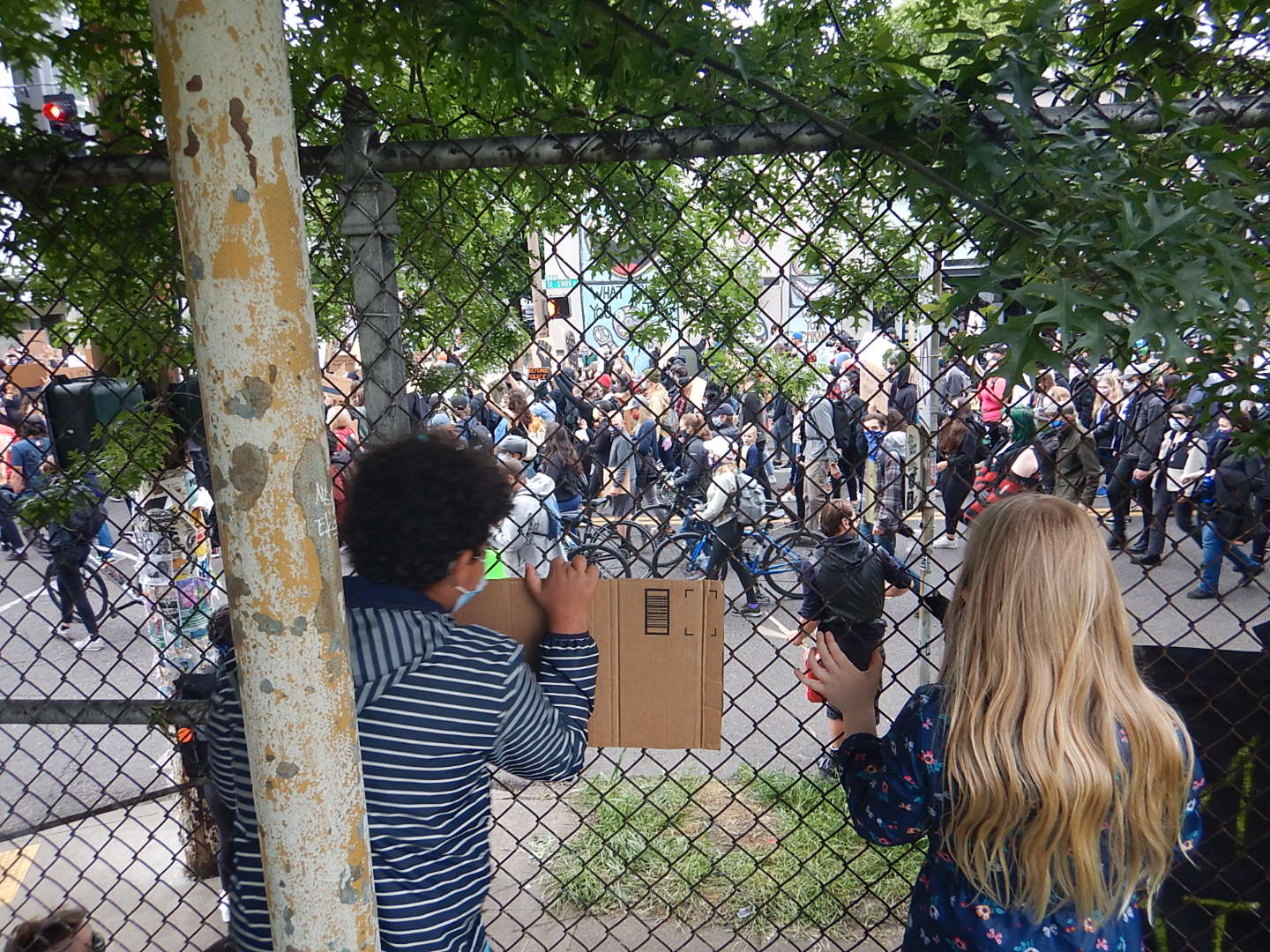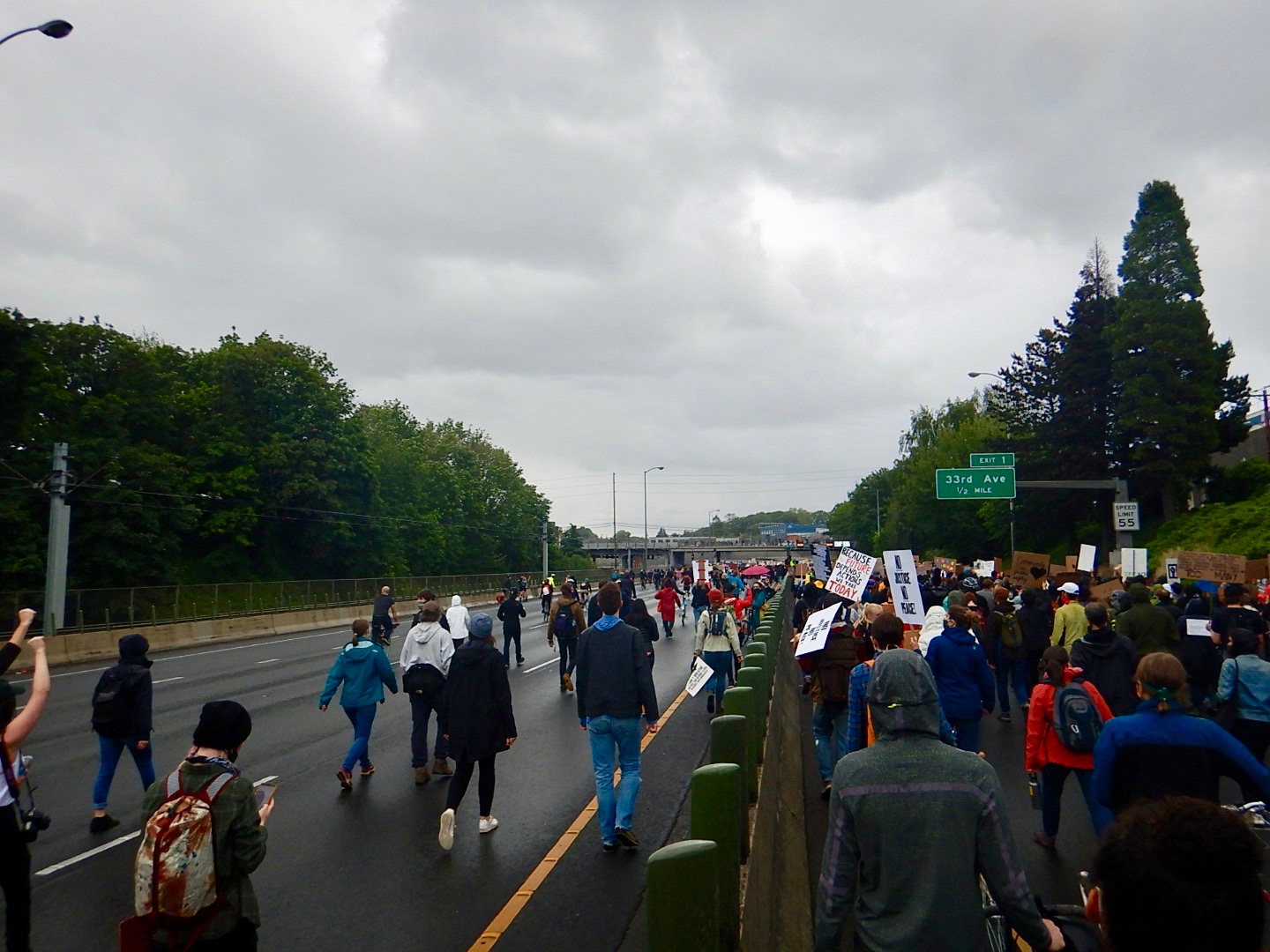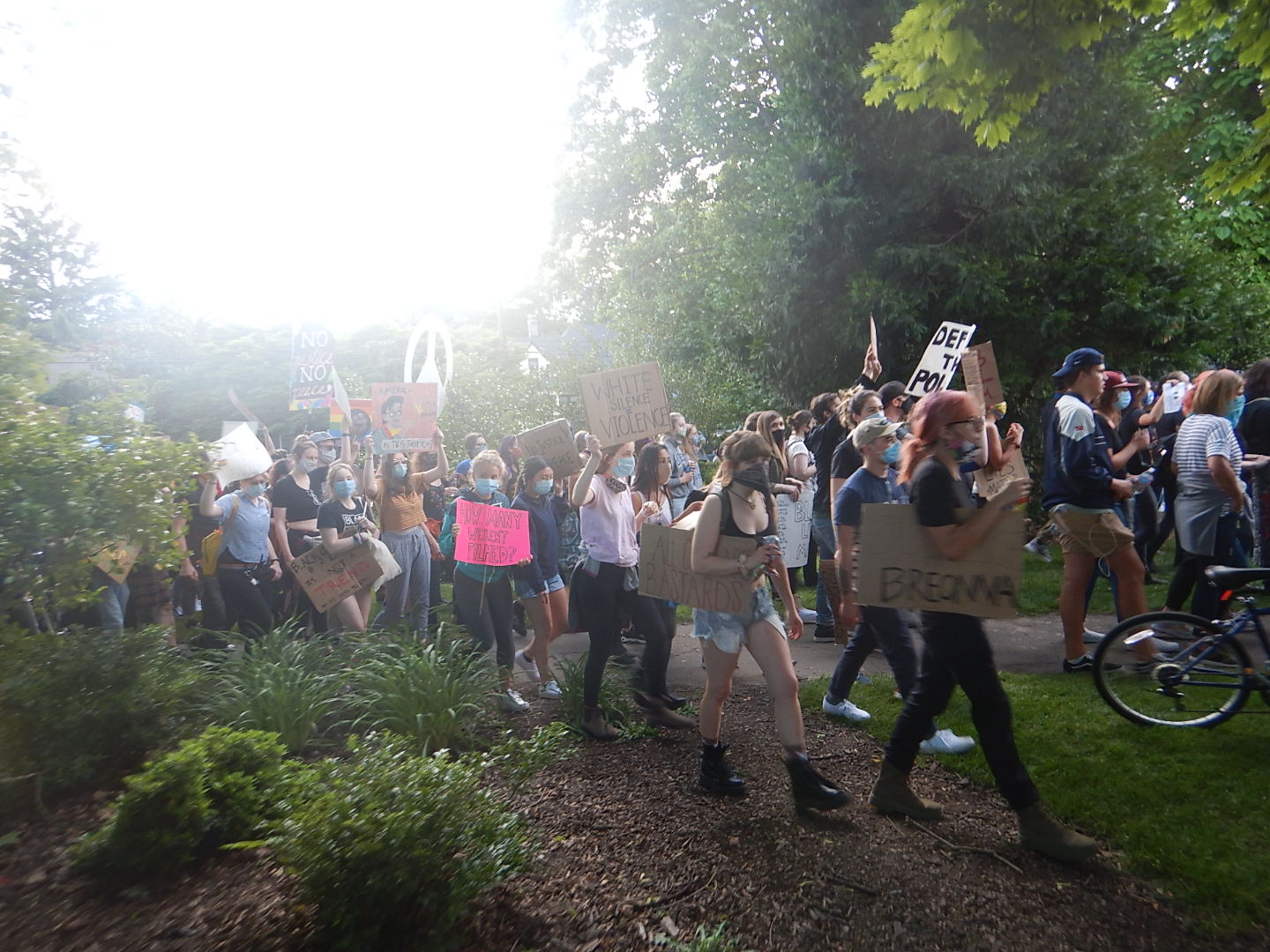Story by Pete Shaw

A month ago I attended the 10th anniversary memorial for Keaton Otis, the young Black man executed by the Portland police near the corner of Northeast 6th and Halsey. That corner has become hallowed ground. For an all too short spell, Otis’s father Fred Bryant held a monthly vigil at the site where his son was murdered. You would perhaps have been forgiven for thinking that there was no point to this ad hoc point of remembrance, although most people with an ounce of compassion, or at least a dollop of decency, would not mention this. We heal, or walk toward healing, or seek its embrace at our own pace.
A couple of years later, still fighting for justice for his son, Bryant passed away. Since then, others have taken up the cause, most notably Otis’s sister, Alyssa Bryant, my friend Walidah Imarisha, and Commissioner JoAnn Hardesty. They have made sure that every month on the 12th, almost no matter the conditions, the vigil has been held. It would be understandable for you to think that it makes no sense for people to be out on that corner because you wonder how that is going to change the racist white supremacist system that allows police and vigilantes to gun down Black people at a rate of one life every 28 hours.
Some of those vigils have been sparsely attended, while others have surged into the hundreds. They are sobering events, no matter the size. New faces often emerge, all in support, too many seeking healing from their lives being savagely thrown off course due to police violence, including loved ones being murdered at the hands of police. The Pacific Northwest Family Circle, which works “to prevent Loved Ones from being harmed or killed by educating the public and changing laws and policies” has members who find something, or hope to find something, of solace at the vigils.
While some of the stories of healing may be uplifting, the backdrop is always grim. And sometimes there is also bad news on the political front, never mind that it seems there is no way to reign in the police, or address systemic issues surrounding policing and its role in terrorizing Black communities and other communities of color. So it makes some sense that you might miss the vast power in the simple beauty of people coming together and giving Comfort as they search for Love and fight for Justice.
The calendar year-marking memorials for Otis have often been held at Maranatha Church in Northeast Portland. They are in the end celebratory affairs, marking another year of community, a reminder of why we fight. There is music. There is poetry. There is memory, and there is sadness. But in the end, there is the uplift of knowing that you are not alone in the belief that you are on the right path.
Due to COVID-19, this year’s 10th anniversary marking of Otis’s murder was held over the internet. It was in many ways the same program it has been in the past. I do not write that in a negative tone. This is not a show, and it is almost always extremely poor form to tell anyone how they should heal. And I never get tired of hearing from good people who refuse to back down. Joe Bean Keller. Irene Kalonji. Maria Cahill. Imarisha and Hardesty. And it never hurts to hear the Wisdom of Reverend Doctor Leroy Haynes and the many others who have given over so much of their lives to this fight to see justice done, not just for Keaton Otis and Fred Bryant, but for all victims of police violence.
Nonetheless, I observed the similarity. And I imagine others may have noticed this as well. So you’d be forgiven if you let that thought override what you do not see between tomorrow and the next 12th: the work of reaching out to other groups that has resulted in Asians 4 Black Lives and Showing Up For Racial Justice, along with the Pacific Northwest Family Circle, joining the Justice for Keaton Otis Coalition in organizing the memorials.
The novel coronavirus has laid bare for eyes that had long been unseeing the gross inequities of racism in the United States, and the capitalist system which it undergirds. It has ravaged Black communities and communities of color, both in terms of contraction and mortality, as well as economic fallout. The dynamic is nothing new. As Imarisha often notes, the United States and its governing institutions were never meant for Black people.
So too it would be reasonable if you assumed most folks, dealing with issues of rent or bread baking or just survival, never mind perhaps raising children in a time of pandemic, do not have any time for anything else.
And then, May 25. George Floyd is executed by the Minneapolis police. One officer chokes Floyd, who has been forced to the ground, jamming his knee into Floyd’s neck. The video quickly goes out over the internet, news wires, and social media. Later, more footage emerges from another angle, showing two other officers applying pressure to Floyd’s chest. Another looks on. Floyd pleads for his life. He begs for his mother. It is a lynching.
Seemingly out of nowhere, people took to the streets in vast numbers, rising up. Much of this was presented in the media as violent and spontaneous, with an all too typical focus upon damage done to buildings and stores instead of the historic and willful systemic damage done to Black bodies and communities that precipitated this moment.

But this time, it seemed more people than in prior recent times of unrest understood this as nonsense, and they were now questioning how a person could privilege the narrative of property damage over an obvious execution. Some understood it as one of the ultimate expressions of white supremacy and how the police wield it as they, the domestic shock troops of capitalism, protect the wealthy and their holdings while attacking the people they claim to serve and protect.
Here in Portland, tens of thousands have been gathering, shutting down streets, bridges, and highways. Night after night, despite vicious attacks by the police, including the rampant use of tear gas, they keep coming back. They have put the Portland police’s inherent violence on full display. Mayor Ted Wheeler, commissioner of the police, approves. He refused to reign in the Portland police’s use of tear gas. The divide between the moral righteousness of the protestors and Wheeler’s moral cowardice is an almighty chasm.
It’s encouraging to hear more people talking about system change instead of rooting out bad apples. The streets around my house are now peppered with displays of support ranging from reigning in the police to prioritizing building healthy communities over a policing and justice system that from its gestation to the present was designed to control Black bodies and has also been used against communities of color and labor groups.

While the police response is as predictable as it is horrifying, it is making clear who the police regard as the enemy, a group that a lot of people until the past few days did not know included them.
Even more invigorating is the long and lengthening list of what good has happened since people started taking to the streets after George Floyd was murdered. Police are getting fired where they once would have skated. Bus driver unions are refusing to help police transport protestors. Confederate monuments are being removed. Charges against Derek Chauvin, the officer who used his knee to suffocate George Floyd, have been upgraded to second degree murder, while the other three officers have also been charged with crimes and taken into custody. Cities are cutting police budgets. Minneapolis is talking about disbanding its police force and replacing it with something that fosters communities instead of terrorizing them.
But that register of achievements looks even better if you know how to read it properly. For example, it shows for June 4, “Portland schools superintendent ‘discontinues’ the presence of armed police officers in schools.” While this is not quite a lie, it is also far from Truth.
For quite a few years, Black students and other students of color have been organizing against having armed police in schools. They have found allies among their fellow white students who think scarce resources–that is, money–should be used for educating students, not policing, and for many, terrifying, them. Their organizing has resulted in this momentous change.
These gains do not spontaneously generate. They are the result of organizing, of all the work going on between mobilizations that so many people do not see. That work is often small and tedious. And as I so often tell folks and write upon these pages, you don’t win very often. But the food is usually good, the company is excellent, and when you do win, you know a joy unlike any other. And then you get back to it. There is another fight, until one day what you have been fighting for becomes another step closer.

Today is June 12. Ten years and one month ago, Keaton Otis was executed by the Portland police. And once again, as for the past ten years, people will keep vigil, again over the internet. Feelings will doubtless be mixed. These uprisings across the country are a cause for hope, even optimism.
After tonight’s vigil, many will return to what they have long been doing. They will keep fighting through various organizations, reaching out to other organizations, fostering solidarity, and offering support. All the organizations responsible for those victories on that list of accomplishments I received a week ago will keep doing the same. Doubtlessly far more organizations, left unmentioned, will also keep working away.
And there is no better time than the present to get involved.
Want to get involved? Check out the Justice for Keaton Otis Facebook page at: https://www.facebook.com/JusticeForKeatonOtis/






